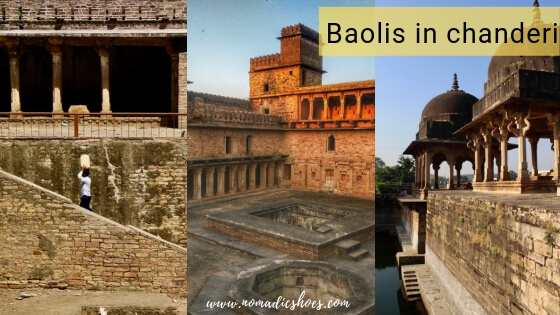
Abul Fazal in his memoir wrote about the many baolis of Chanderi. According to him, there were around 1200 Baolis in Chanderi. Locals claim that every house in Chanderi had an underground baoli!
Ever since I read about step wells in class 7th, while studying the Harappan civilisation, I was fascinated by the Great Bath – a community area where people came to bathe and wash clothes. It served as a place of social interaction and community building.
“Thousands have lived without love, not one without water”
W. H. Auden
Over the years, plastic & concrete over-head tanks took over, pushing baolis (step-wells) into obscurity & making them huge garbage dumps. Community interactions happened over mobile phones & social media, in ones comfort. In Chanderi, the 1200 step-wells followed suit, with just a handful of them remaining under the shades of forgotten history & a long lost glory.
I cannot travel back in time & explore the 1200+ baolis but I could share few of the ones that survived for a future where both baolis and water itself is endangered. I should surely write, I told myself standing by the steps of another beautiful monument of yesteryear, and here I am sharing it with you.
The beautiful Baolis in Chanderi
Chakla Baoli
One of the largest among all step wells in Chanderi, Chakla Baoli is rectangular shaped step-well, built during the Khilji reign. As per the inscription at the entrance this baoli was meant for the women of the noble family. At the west side stairs of the stepwell there are two cenotaphs at both ends, in Rajput architecture. On the left side of the cenotaph are two tombs – one belonging to Shiekh Raji Mohammad’s wife (nephew of Sufi saint Hazrat Baba Farid Ganj-e- Shakar), while the second tomb is nameless without an inscription found on it.
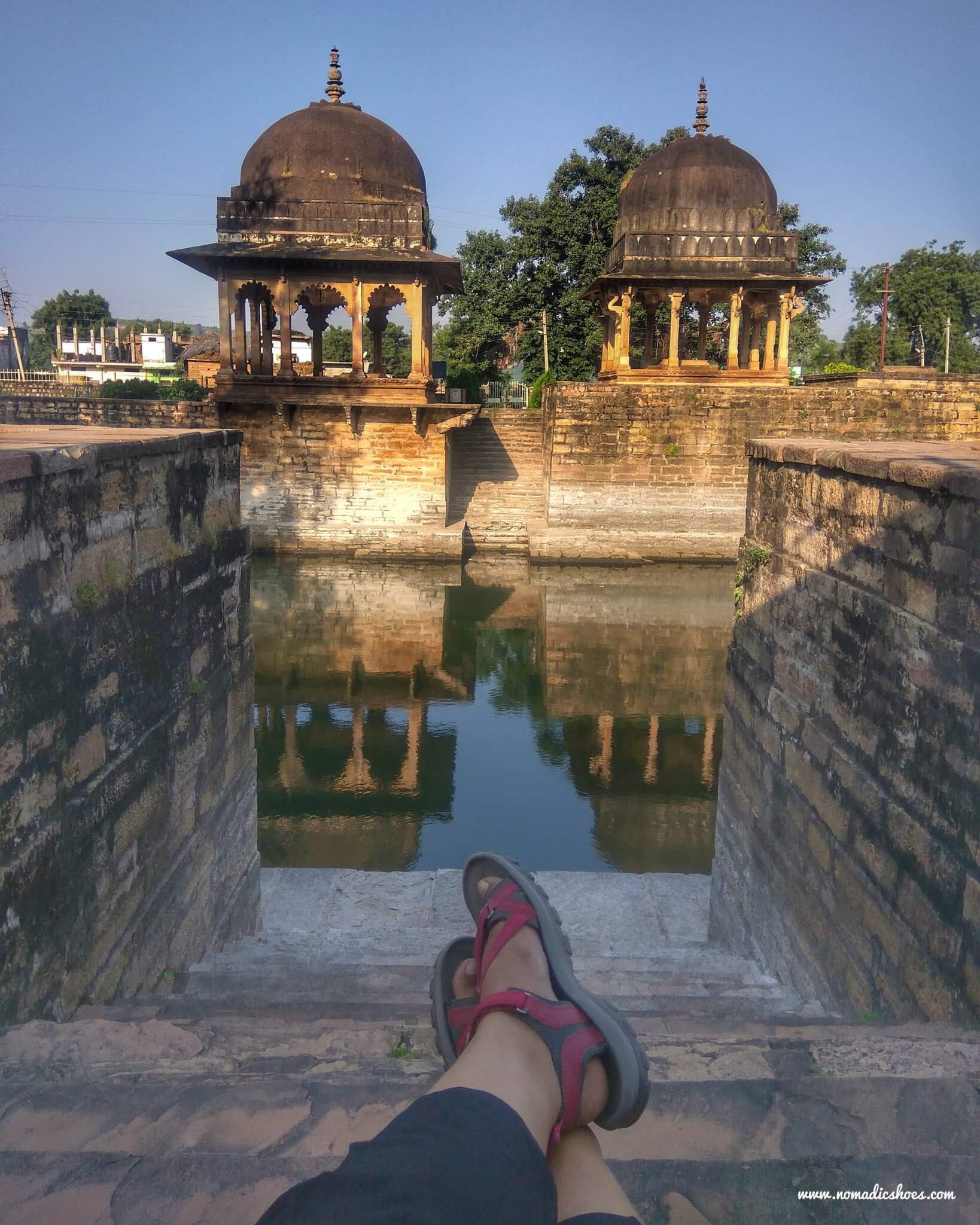
Battisi Baoli
The largest baoli in Chanderi, Battisi Baoli is four storeys deep and 60 X 60 feet with 32 ghats for bathing! Battisi Baoli was built by Sultan Ghyas Shah in the late 14th century. The bard claims that ’till the time there is water in the oceans this baoli will never get dry’ – I truly hope so.
The water level at Battisi Baoli do remain the same throughout the year. As per the inscription by ASI, there used to be a Mosque adjacent to the baoli. However, now only the baoli is left with tales untold.
Raja Rani Mahal Baoli
Raja Rani Mahal was the official residing palace for the King of Chanderi. The palace complex has two distinct buildings – one belonged to the King and the other to the queen. Both the palaces inside the complex were connected by beautifully designed passages.
Raja Rani Mahal also served as the Shahi Hammam [royal bathing place]. Once an epitome of grandeur this palace now stands alone, amidst all the hustle bustle of an expanding town. The palace was locked and there was no guard when we reached there. After waiting for sometime, I decided to jump the small fenced gate. The palace looked so magnificent that I couldn’t stop myself.
On entering from the small gate, I found a small baoli placed next to a well. Will share more about the palace later, in another blog-post.
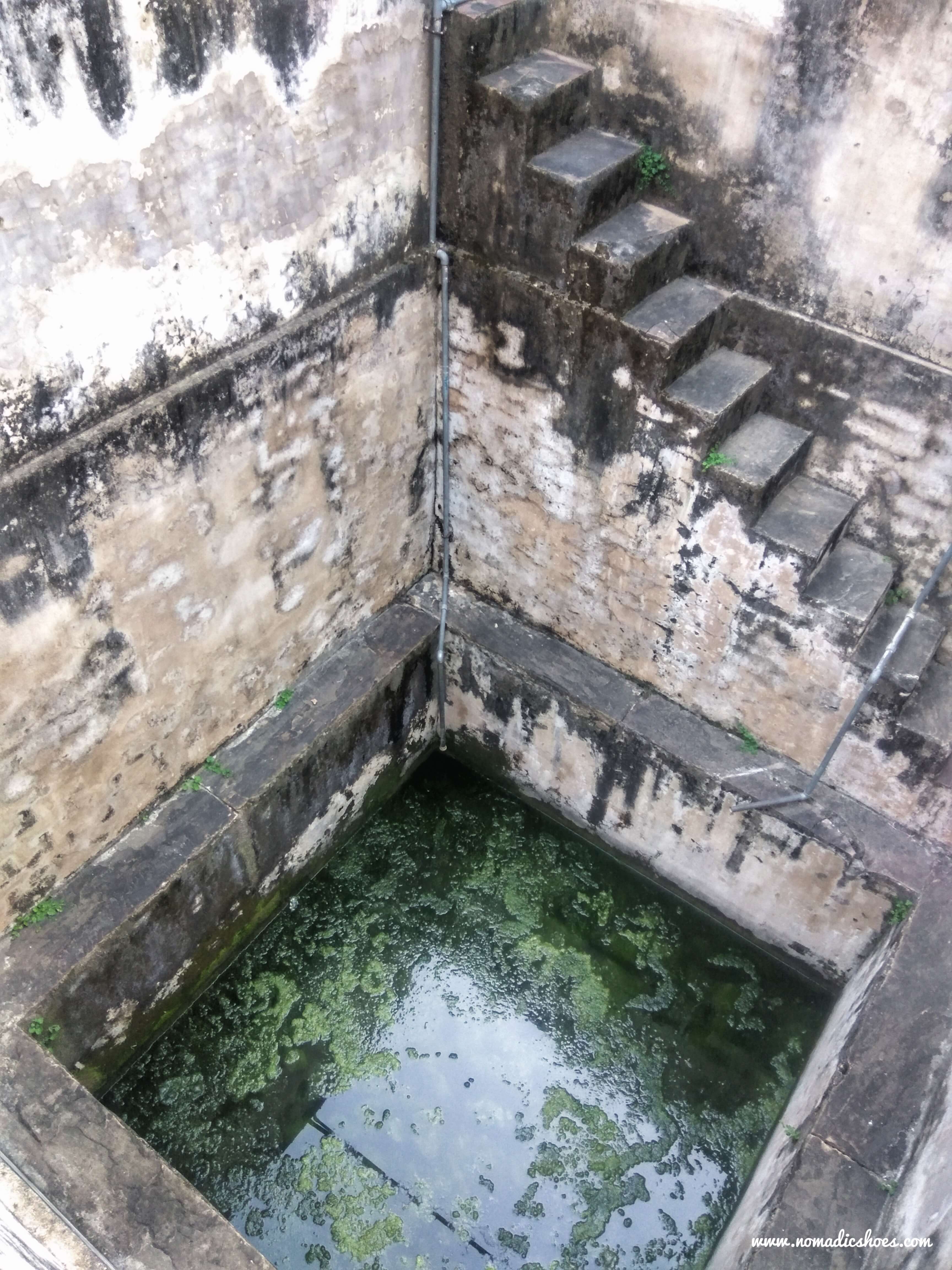
Baoli in Raja Rani Mahal 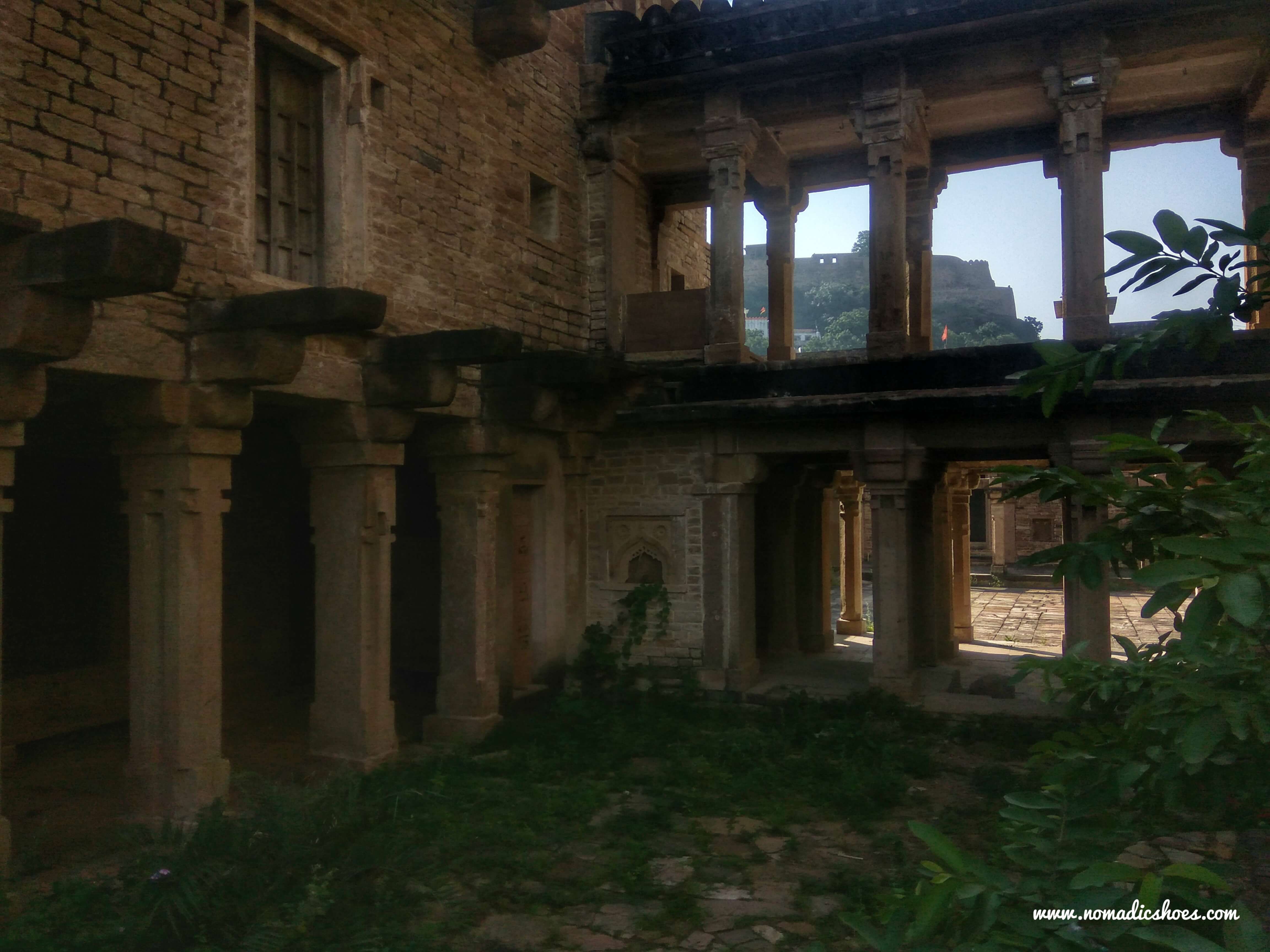
Passage connecting both palaces 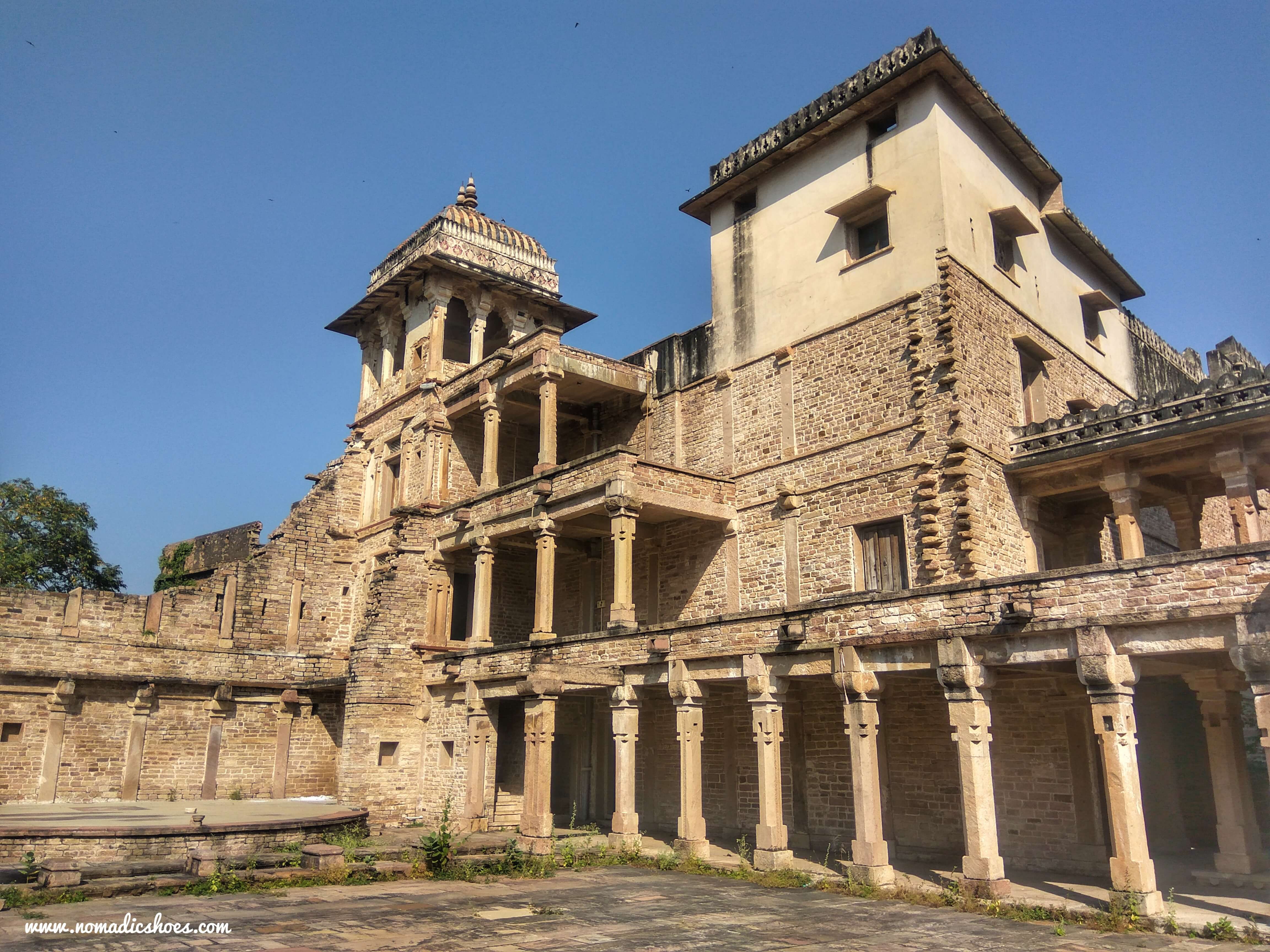
Rani ka Mahal
Jageshwari Temple Baoli
One of the shaktipeeth, Jageshwari temple was built by Raja Kirtipal. He saw a dream where the goddess commanded him to built a temple for her. She instructed him to close the temple for 9 days after constructing the temple, for her to construct the deity’s idol. The curious king couldn’t stop himself for nine days and opened the doors in between. By the time he opened the door, only the head of the goddess was sculpted, the rest never got completed!
On your way to the temple, you will find a baoli on your left which is probably the most filthiest of all baoli’s I visited in Chanderi. Yet people come here to fill their buckets, wash clothes and to bathe!
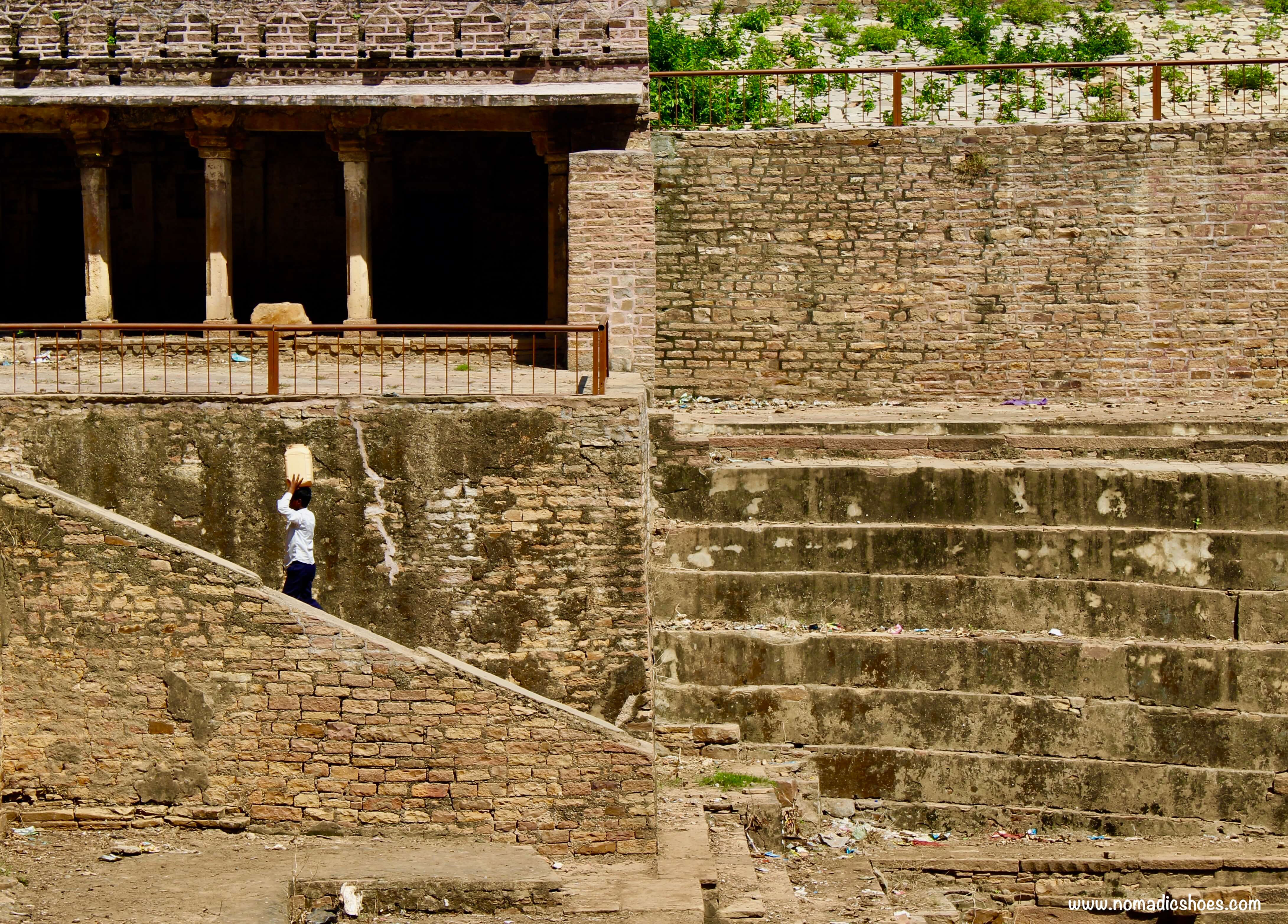
Locals collecting water from Jageshwari Temple baoli 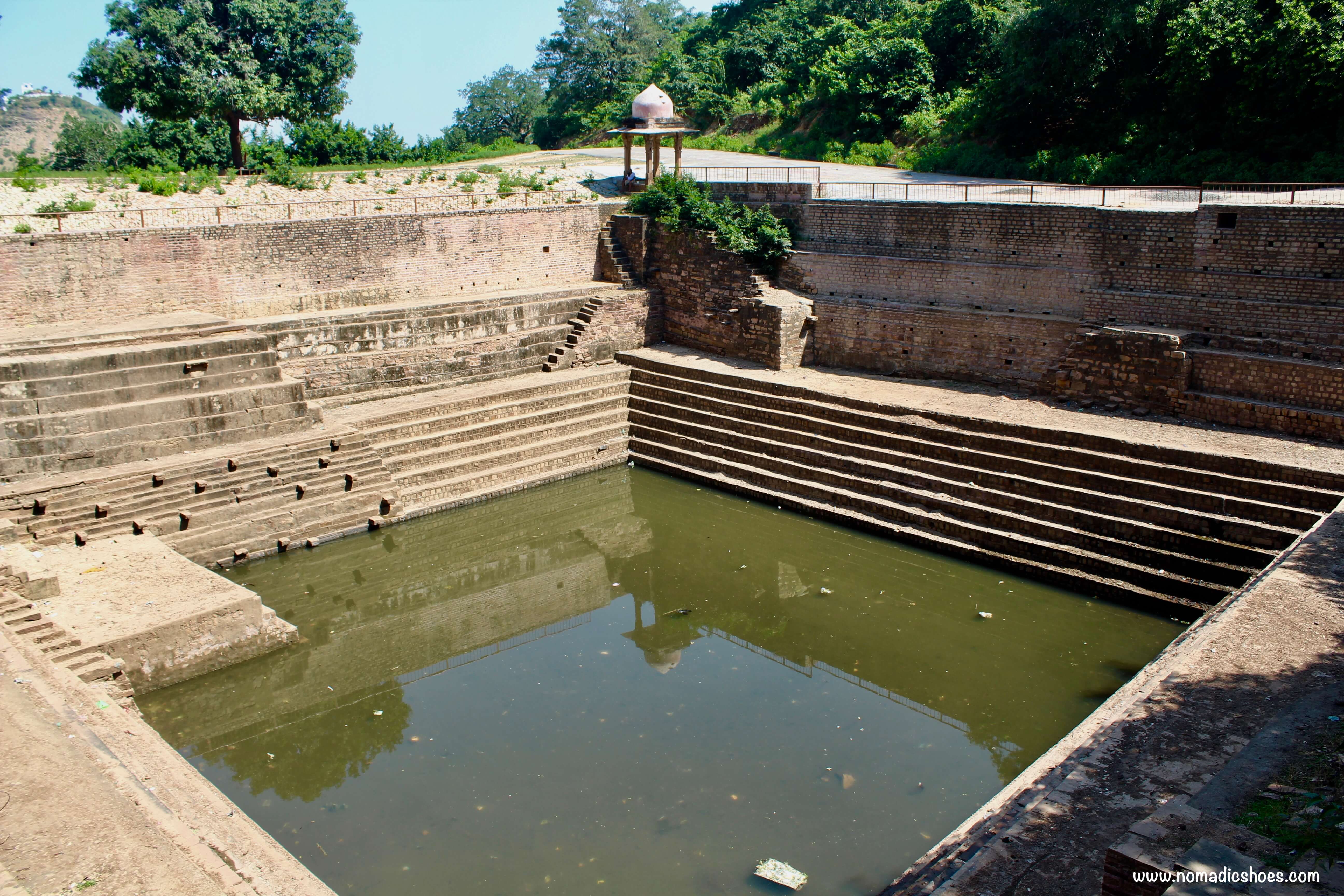
Baoli at Jageshwari Temple
Ek Patthar Ki Baoli
Located near Aab-e-Zamzam, this baoli is on Chandragiri Hills. Carved out of a single rock piece as the name Ek Patthar suggests. Monsoon rains refill this baoli every year through the many streams nearby.
Chandai Baoli
Chandai Baoli is located near Rajghat Colong in Chanderi. Built by Chand Bakkal and his brother, this baoli was dedicate in the memory of their mother. Wish, our politicians & the rich followed suit.
Badal Mahal Baoli
This one is the newest addition to the list of restored baolis in Chanderi. Inside the Badal Mahal complex, ASI is still in the process of excavating this stepwell. Some renovation has also been done to this baoli to protect it from dilapidation.
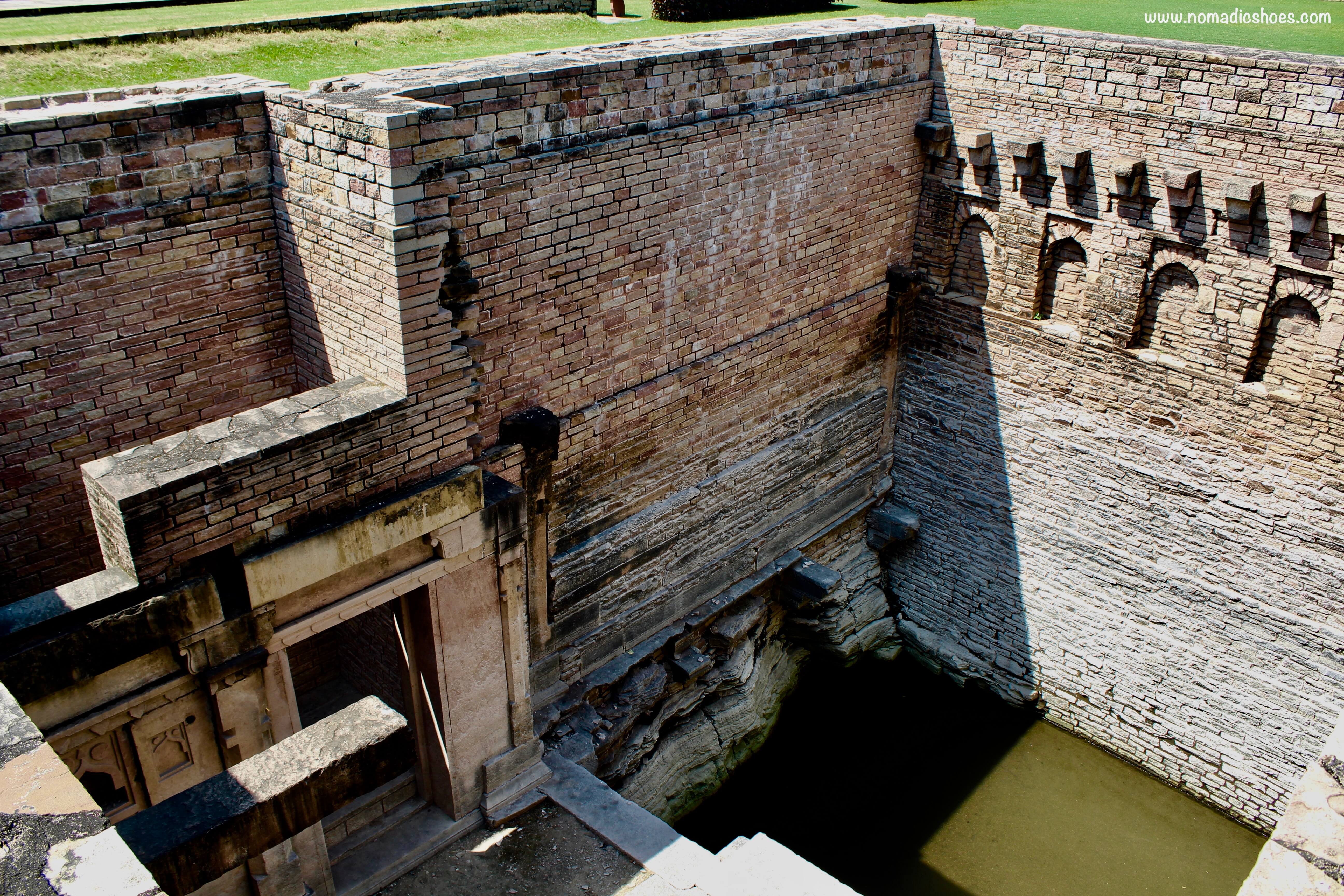
There are many more baolis in Chanderi, but then I had much less time at hand. Listing some of them here, maybe you can plan better and see them all:
- Musa Baoli
- Gol Baoli
- Qaziyon ki Baoli
- Phool Baug Baoli
…
Some essential information for you to plan your trip to Chanderi:
Travel to Chanderi:
Best Time to Visit Chanderi
The best time will be in winters [November to January] and just after the monsoons [July-August].
How to Reach Chanderi
Option 1 [By Air]: Fly to Bhopal or Gwalior and hire a private car for Chanderi.
Option 2 [By Train]: Nearest railway station to Chanderi is at Lalitpur which is about 40 kms away. From lalitpur, board a local bus for Chanderi.
Option 3 [By road]: There are two private buses by Kamla Travels for Chanderi at 9 pm from Bhopal. Chanderi is well connected by road to major cities nearby.
Where to stay
There are plenty of accommodation options available at Chanderi for all kind of travellers, budget or leisure.
We stayed at Kila Kothi which was earlier the royal residence of the Scindhia state and is now managed by Madhya Pradesh Tourism. The experience of staying next to a fort overlooking the city of Chanderi was amazing, almost felt like living in royalty :). The rooms were spacious and comfortable, staff was friendly and the view outside our room was like a beautiful painting.
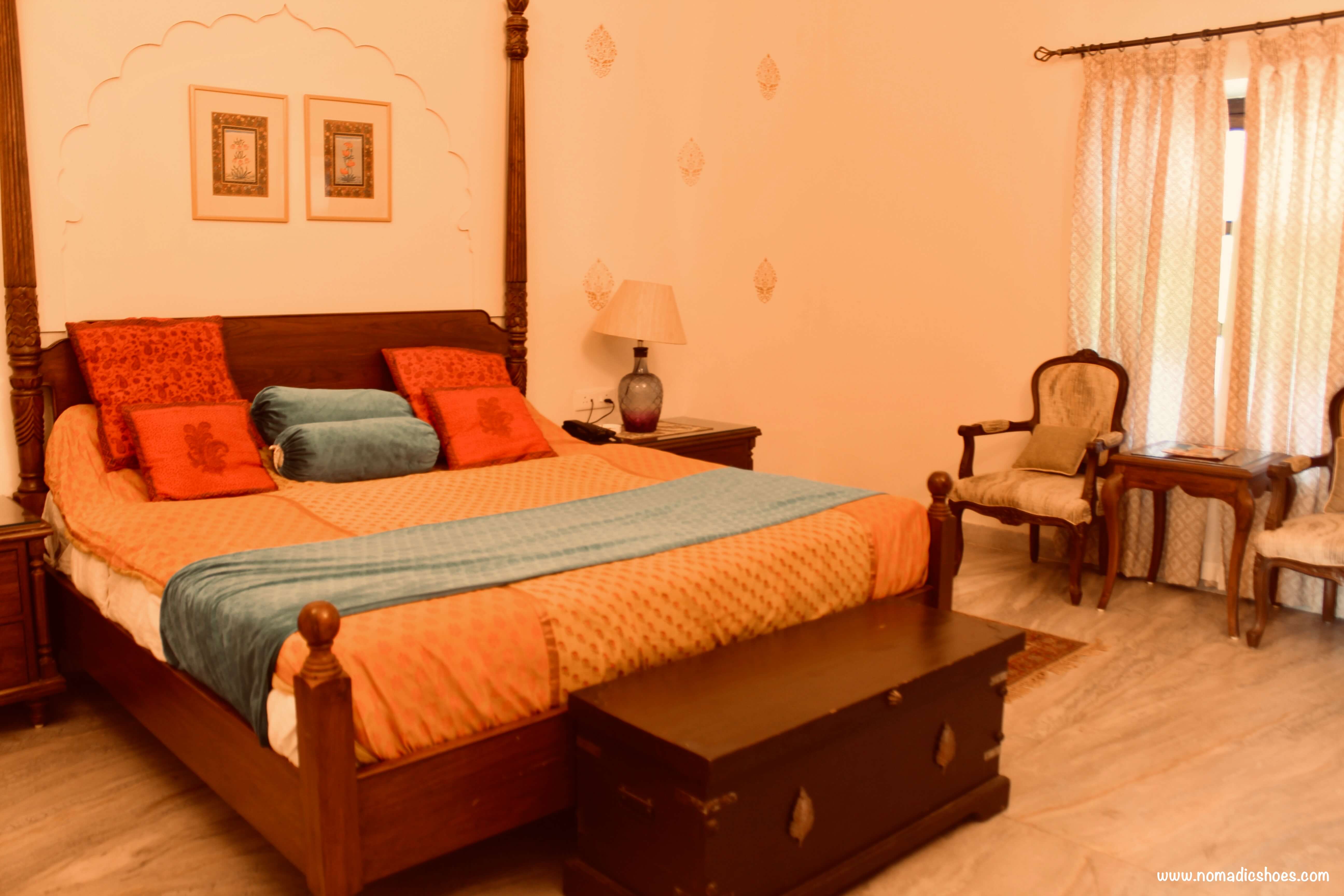
There are other hotels in Chanderi too, like Tana Bana, Hotel Shrikunj, Shyam Vatika.
…
Chanderi was never a part of my travel plans for this year. But then fate has its own mysterious ways and forms to derail all your plans, this time it was in the form of a Facebook post by Swikriti Dandotia. She informed me about a trip to Chanderi, organised by Madhya Pradesh Tourism Board.
When I heard about Chanderi, I had expected a guided tour through the looms that produce the famous Chanderi Silk Sarees. But Chanderi had much more to offer than I expected. A beautiful fort, many religious monuments, the looms and then there were Baolis.
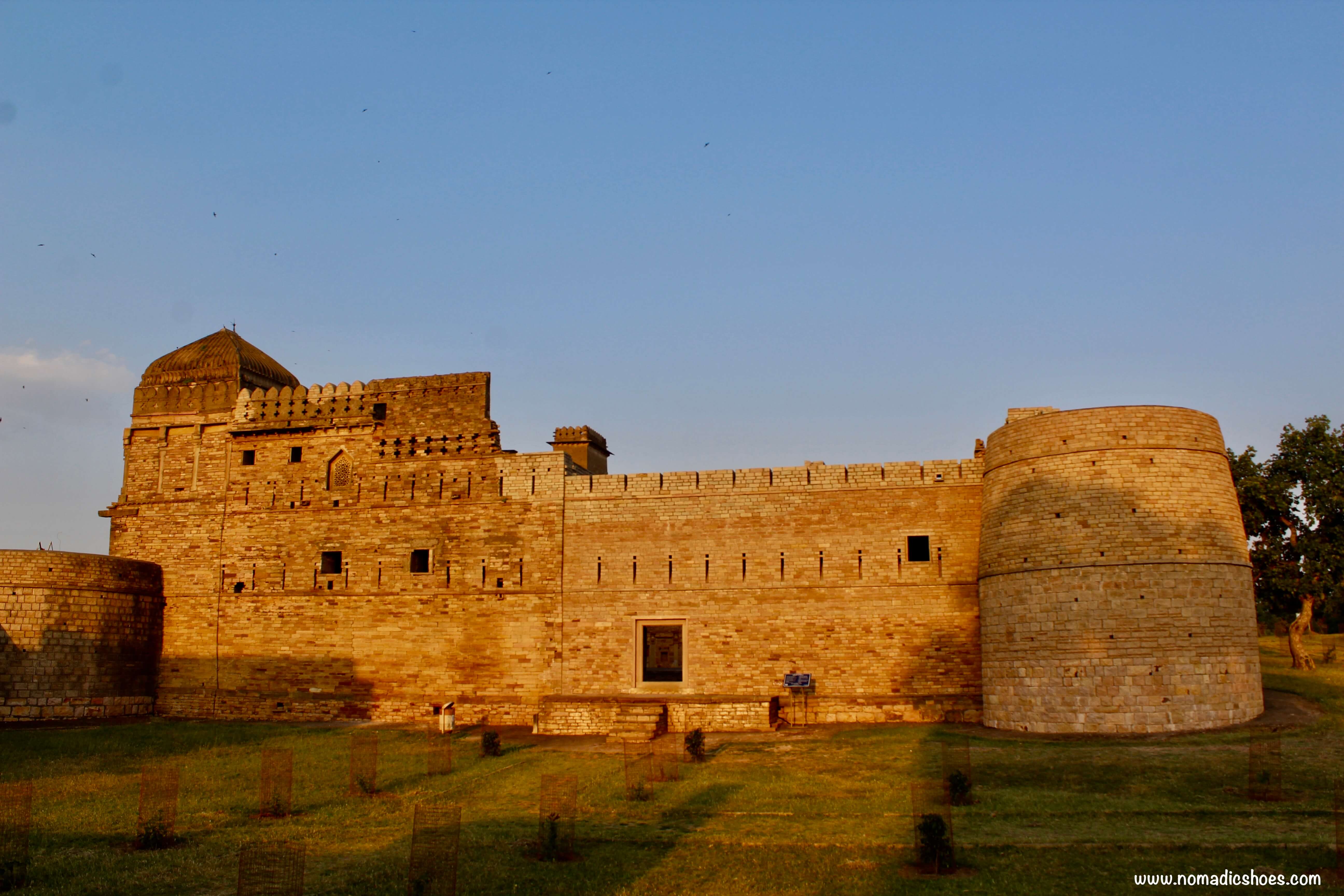
Chanderi Fort
This is the first post of a series, where I will introduce you to many fascinating tourist places in Chanderi.











Neat images I love the historical context behind them too. Great post!
Nice to know about history of these places. My some relatives are lived in India, may be some day I visit there and see these beautiful places.
As a family doing travel and photography this place is just enticing. Hopefully one day we’d get to see this place in person.
I’ve never heard of Chanderi, so it was really nice to read more about it and see the beautiful architecture! There are so many stunning little corners in the world!
Looks like great history connected to all these step wells, when I plan next visit I am going to visit these place beautiful post. you are introducing new place for me to visit during India trip.
What great picture and I love the historical background
This article is so interesting! What an amazing architecture! It is always nice to have different travel guide, with places that people don’t usually go to but are still super worth it!
It looks so historic and rich in culture here. I never knew about this area. The hotel is very cozy and chic looking.
I would love to spend a day here exploring and walking through all of the historic buildings. I have never heard of this place- so thanks for opening my eyes!
Seeing such amazing architecture make you wonder and imagine how it would have been in its glory days, when people would go there to bathe. It’s truly fascinating!
Chanderi is such a historical place. I’ve always been fascinated by histories. And the building were built with such great architecture. The Baoli inside Badal Mahal looks awesome!
This looks like a great place to explore. I love when places are filled with history.
Your travels have been steeped in history. What a rich experience.
I have been to India but only to the Agra, Jaipur, New Delhi and Kashmir. Chanderi is totally fresh to be but I love how there are so many interesting and historical spots to discover here.
Raja Rani Mahal was the official residing palace for the King of Chanderi. Love to learn facts like this.
Such a great explanation and your photos do tell the story. I love the buildings hopefully I get to travel next year.
This is such a beautiful area! I need to explore it one day for sure. I am all about learning more about other cultures and history.
What a beautiful place Chanderi is! I haven’t been to India but it is on my top bucket list. Because I love seeing and learning history and get inspired by beautiful architecture designs.
Step-wells are not that common in my country and I was always fascinated learning about them when I visited India. Never knew Chanderi had so many of them. I would love to visit some of these when I come back to India
I can now understand where you had been when we were all searching for you! 🙂 On a serious note, this is a wonderful post. Not everyone understand the significance of Baolis. But just as you have said, Baolis are quite fascinating. I too have this desire to see the famous Baolis.
Thanks for explaining what a Baoli is, I had no idea. And the significance of a stepwell is obviously very important in Indian culture 🙂 Will have to look out for them next time I am in India x
and what is the significance of baoli?
Stepwells are made to preserve water in areas where water is scarce during summers.
i’m confused… so is baoli a step-well?
Yes Baoli or bawdi is local word for stepwells in india
step-wells are not common where I came from that is why I am really fascinated with your baoli articles. Chanderi fort looks amazing and that hotel room looks cozy.
Thank you for your comment.
Fascinating! So interesting how places like baolis plays such a central role in people’s lives in one generation, only to be misused and abandoned later on. Times keep changing…
What amazing architecture and really interesting history. When we were in India, we saw many of these Baoli and often wandered about their stories. Now I know that I should have explored them further.